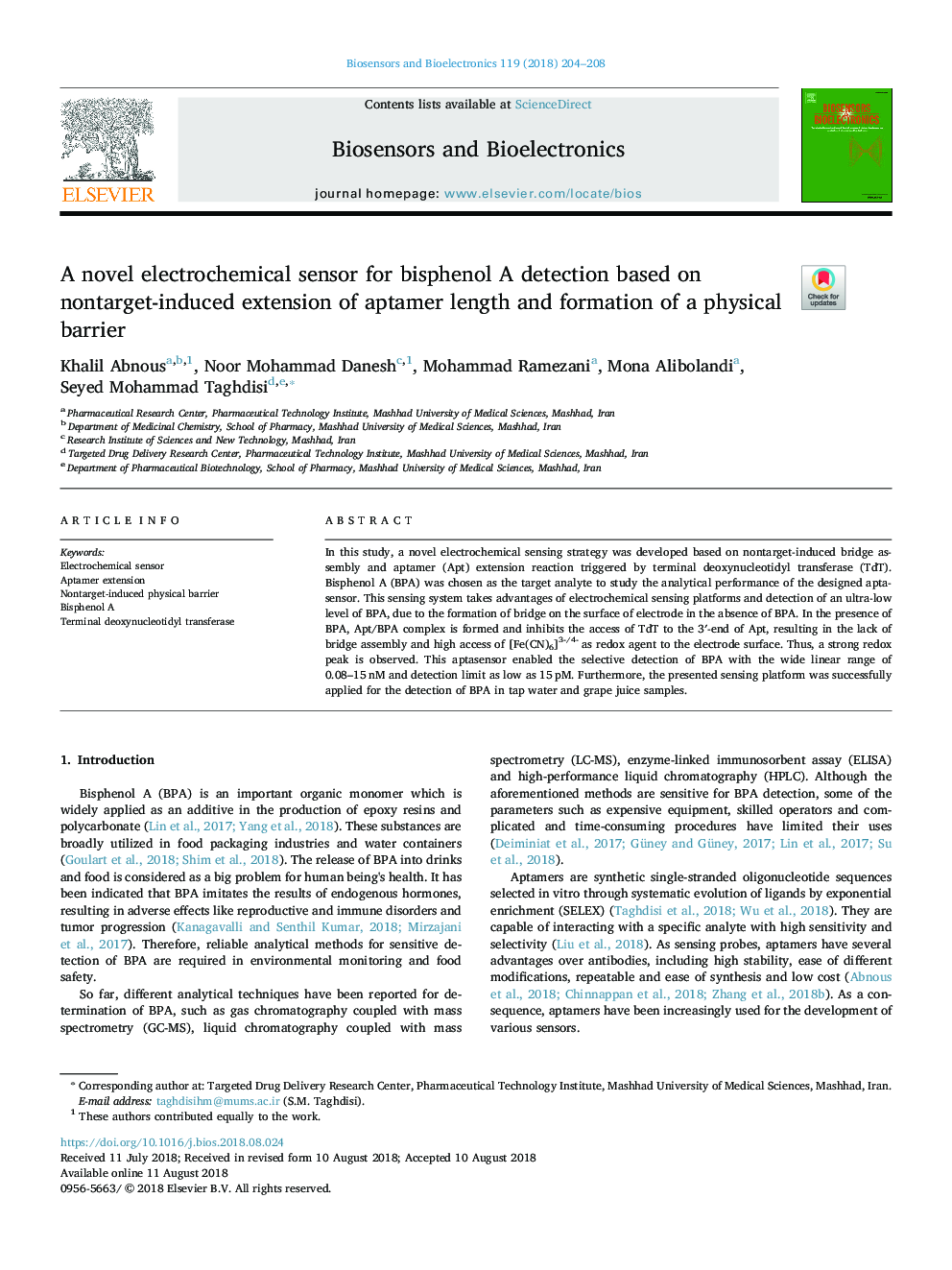| Article ID | Journal | Published Year | Pages | File Type |
|---|---|---|---|---|
| 11004325 | Biosensors and Bioelectronics | 2018 | 5 Pages |
Abstract
In this study, a novel electrochemical sensing strategy was developed based on nontarget-induced bridge assembly and aptamer (Apt) extension reaction triggered by terminal deoxynucleotidyl transferase (TdT). Bisphenol A (BPA) was chosen as the target analyte to study the analytical performance of the designed aptasensor. This sensing system takes advantages of electrochemical sensing platforms and detection of an ultra-low level of BPA, due to the formation of bridge on the surface of electrode in the absence of BPA. In the presence of BPA, Apt/BPA complex is formed and inhibits the access of TdT to the 3â²-end of Apt, resulting in the lack of bridge assembly and high access of [Fe(CN)6]3-/4- as redox agent to the electrode surface. Thus, a strong redox peak is observed. This aptasensor enabled the selective detection of BPA with the wide linear range of 0.08-15â¯nM and detection limit as low as 15â¯pM. Furthermore, the presented sensing platform was successfully applied for the detection of BPA in tap water and grape juice samples.
Related Topics
Physical Sciences and Engineering
Chemistry
Analytical Chemistry
Authors
Khalil Abnous, Noor Mohammad Danesh, Mohammad Ramezani, Mona Alibolandi, Seyed Mohammad Taghdisi,
